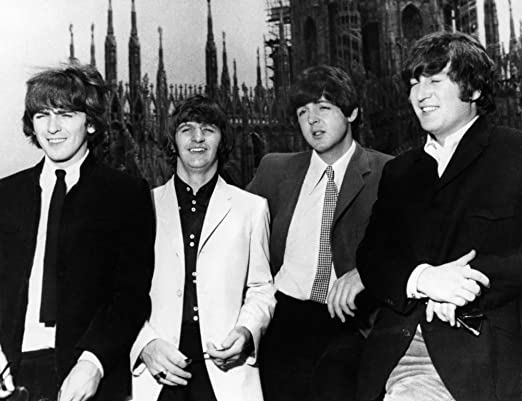A very good George Harrison song. While I was searching for the song on youtube…I came across a 19-minute studio outtake with the Beatles when they were working on this song. George had a time reeling in John and Paul but…I will say this…Lennon could be hilarious. Actually, all of them could be. When you have 19 minutes to kill…listen to that outtake I will post above the song. It gives an insight into them. One comment was, “they sound like drunk teenagers, ” which is correct. They were young and their sense of humor was flowing.
Lennon and McCartney’s songwriting was improving by leaps and bounds at this time. They had started to write years before and George had only been writing a couple of years. He did have one thing they didn’t have…he witnessed firsthand Lennon and McCartney’s writing and was influenced by them. This was only George’s fifth published song, the lyrical depth, and structure of Think For Yourself proved that George Harrison was going to improve and catch his bandmates in quality if not quantity.
The music to this one is really cool. Paul plays his bass through a fuzz box to give the song a different sound. The song was on the 1965 album Rubber Soul. This album was a game changer that started with Help! and would lead up to Sgt Pepper in 1967.
Rubber Soul showed the Beatles growing artistically and venturing out to different styles of music. Since With The Beatles they were trying new things with every album. By this time they were breaking out of the Beatlemania image and started touching on every genre to a more mature sound. The Beatles were breaking/making the rules as they were going along. Not only in writing superb songs but pushing the limits of the studio as well as doing things that pop stars just didn’t do before them…
Producer George Martin was also developing artistically, experimenting with an eye toward making the album sound good in either stereo or mono.
Rubber Soul peaked at #1 in America, Canada, and The UK in 1965.
George Harrison: “When Phil Spector was making ‘Zip-A-Dee Doo-Dah’ (by Bob B. Soxx And The Blue Jeans), the engineer who’d set up the track overloaded the microphone on the guitar player and it became very distorted. Phil Spector said, ‘Leave it like that, it’s great.’ Some years later everyone started to try to copy that sound and so they invented the fuzz box. We had one and tried the bass through it and it sounded really good.”
Think For Yourself
I’ve got a word or two
To say about the things that you do
You’re telling all those lies
About the good things that we can have
If we close our eyes
Do what you want to do
And go where you’re going to
Think for yourself
‘Cause I won’t be there with you
I left you far behind
The ruins of the life that you had in mind
And though you still can’t see
I know your mind’s made up
You’re gonna cause more misery
Do what you want to do
And go where you’re going to
Think for yourself
‘Cause I won’t be there with you
Although your mind’s opaque
Try thinking more if just for your own sake
The future still looks good
And you’ve got time to rectify
All the things that you should
Do what you want to do
And go where you’re going to
Think for yourself
‘Cause I won’t be there with you
Do what you want to do
And go where you’re going to
Think for yourself
‘Cause I won’t be there with you
Think for yourself
‘Cause I won’t be there with you







